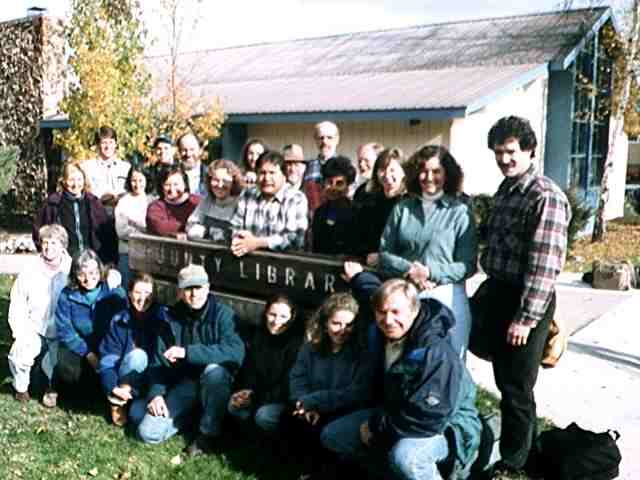
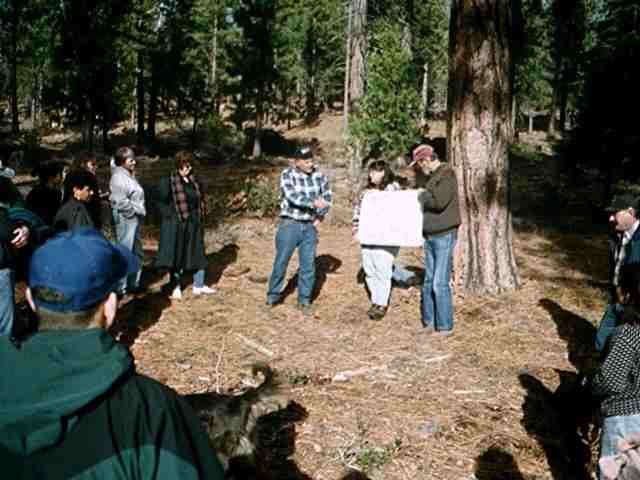
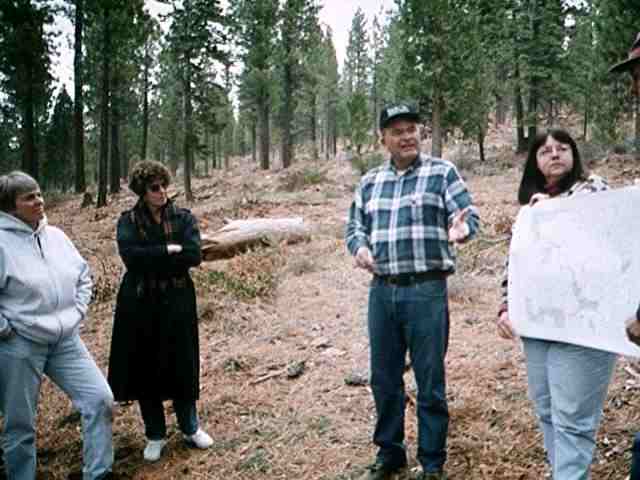
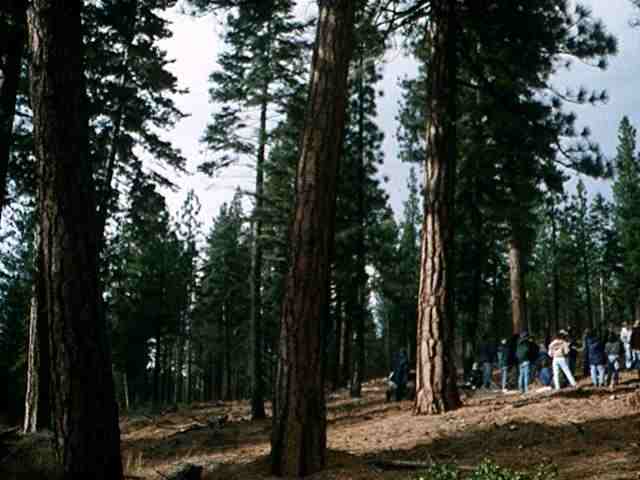
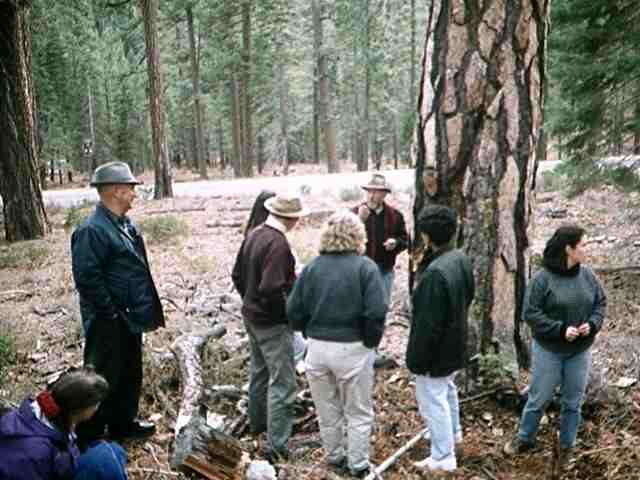
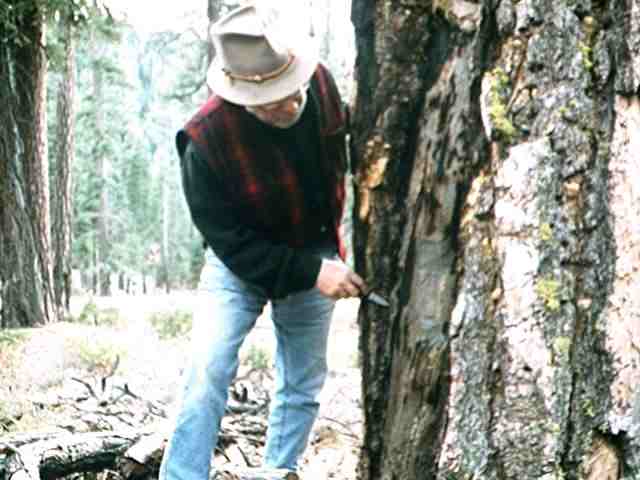
7th
AMERICAN FOREST CONGRESS
COMMUNITIES COMMITTEE
The Communities Committee of the 7th American Forest Congress visited Quincy November 19-22, 1997 to learn first hand about the Quincy Library Group and its legislation. Participants included: Greg Aplet, Jim Burchfield, Hanna Cortner, Genni Cross, Carol Daly, Stephanie Alting, Maia Enzer, Michael Goergen, Gerry Gray, Sandra Hill, Wendy Sanders, Lynn Jungwirth, Jonathan Kusel, Laura McCarthy, Juan Mendoza, Mary Mitsos, Ann Moote, Mary Tess O'Sullivan, Betsy Rieke, Kevin Smith and Leah Wills.
 |
 |
 |
 |
| A group photo outside the Quincy Library. | Introduction to the Highway 89 Defensible Fuelprofile Zone (DFPZ). | Left to right: Lynn Jungwirth (Community Committee Chair), Hanna Cortner, John Kennedy (Resource Officer, Sierraville Ranger District), Linda Blum (QLG member, self-proclaimed "environmental wacko") | Committee members to the right of the large Jeffrey pines retained on the DFPZ (shaded fuelbreak). |
 |
 |
||
| Discussing the historic role of fire as recorded in the fire scar on this Jeffrey pine (closeup to the right). | QLG member Mike Yost examining the fire scar. |
7th AMERICAN FOREST CONGRESS COMMUNITIES COMMITTEE
MISSION STATEMENT
The purpose of the Communities Committee is to focus attention on the interdependence between America's forests and the vitality of rural and urban communities and to promote:
BACKGROUND
The Seventh American Forest Congress met in Washington D.C. in February of 1996 to draw together diverse perspectives and help establish a common vision for the future of our forests in the United States. This congress, the seventh since 1882, was unusual in that it was a people's congress, rather than the typical convention of the current powers in forestry. The Board of Directors of the Congress made the decision to create five national committees (education, research, management, policy, and communities) to ensure the work and visioning begun at the national congress was continued.
The Communities Committee was a late comer in the planning process and was added in September of 1995 to address the critical sets of issues that link community health and forest management. The work of this committee was expected to clarify the emerging community voice on forestry issues and explore the implementation of community forestry in the United States. The committee was also given the charge of continuing the dialogue with local communities and special interest groups as follow-up to the Congress.
One very important goal was to make the general Forest Congress aware of community issues. That strategy proved very successful. In Roundtable discussions several areas of agreement became clear. One such area was the interdependence between healthy forests and communities. When confronted with the principle that, "In the future our forests will contribute to strong and vital rural and urban communities that benefit from, protect and enhance the forests in the vicinity," 75% of Congress participants agreed. With this kind of legitimacy established by the Forest congress, the committee began to move forward.
The program has evolved since that time but the initial vision remains intact. After the eighteen months of program activity, made possible through this funding, the Communities Committee has both the form and substance to become a voice for community-based forestry in the United States. The most recent evidence of the legitimacy of our efforts was demonstrated in a learning session about community based forestry for the Senate Energy and Natural Resources Committee in May of 1997. This session was aimed to inform members of Congress, particularly Senator Larry Craig (R-Id) who is in the process of creating a bill which, if enacted, would reform much of the current national forest land management practices, and to engage members of the environmental community and timber interests from the local to the national level in dialogue and the role of communities in forest management.